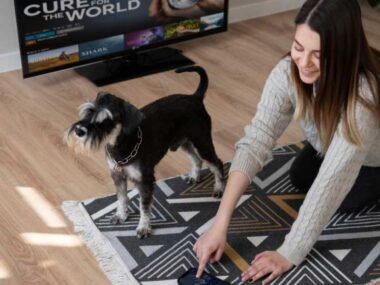You’ve probably walked through a market, music festival or local footy match without thinking twice about the logos scattered across tents, signs or caps. And that’s exactly the problem. Most brands show up, but they don’t land. There’s often a huge gap between being visible and being remembered — and that gap is where practical branding lives.
Outdoor events offer something digital campaigns can’t replicate: real-world contact. Not just a glance, but a moment. A drink handed out under a marquee. A chat in the shade of a branded umbrella. These aren’t impressions on a screen. They’re physical, sensory, human. And yet, too many businesses overlook them, treating event branding like a box to tick rather than a chance to embed themselves into people’s day.
Branding That Doesn’t Scream for Attention
It’s tempting to think that if you’re not shouting, you’re not heard. That’s why so many event setups go loud — neon banners, oversized merch, anything to grab a glance. But outdoor events are busy, messy, and often chaotic. People are there for the music, the food, the social buzz. In that environment, the loudest branding usually fades into the background.
The things that actually stick? They’re quiet. A sturdy drink holder that keeps your beer cold. A lightweight tote that fits a few market finds. A bucket hat that gets passed around because it’s just good. None of these shout. But they’re handled, worn, seen. They live with people, and that’s what makes them valuable.
When someone uses your brand without thinking about it, that’s a win. Not because they’re endorsing you, but because you’ve become part of their normal. That kind of familiarity builds naturally, without pushing.
Everyday Use Equals Long-Term Impact
The power of practical branding isn’t in the moment someone receives it. It’s in the months — sometimes years — that follow. Think about how long someone hangs onto a decent cooler bag, or a well-made drink insulator. These aren’t just novelties for the day. They’re useful. And because they’re useful, they stay.
When your branding ends up in a picnic basket, or tossed into the back of the ute for the next camping trip, it travels. It shows up again and again, not in your ads, but in real-life moments that matter to the person using it. That kind of exposure doesn’t feel like marketing. It feels natural.
More than that, it builds a kind of low-key loyalty. Your brand is there when they’re at the beach with mates. It’s part of the barbecue on Sunday. It’s visible, but not demanding. That passive presence becomes powerful over time, especially when other brands have long faded from memory.
Why Practical Beats Promotional at Local Events
At local markets, footy days and regional festivals, people are overloaded with flyers, sample packs and branded handouts. Most of it ends up crumpled, forgotten or left behind. It’s not that they don’t appreciate the gesture — it’s that they’ve been handed the same throwaway promo gear too many times before. If it doesn’t serve a purpose beyond the logo, it rarely lasts more than a day.
That’s where practical branding makes a quiet difference. It doesn’t ask for attention. It earns a place in someone’s routine. At outdoor events, especially in warm weather, things like shade, cold drinks and convenience become immediate needs. Brands that meet those needs stand out — not because they’re louder, but because they’re helpful.
Plenty of small Aussie businesses have started leaning into items like customised stubby holders, not as a gimmick but because people actually use them. At a footy match or beer fest, they’re functional. They get passed around, photographed, and brought back out the next weekend. They’re low-cost, low-pressure, and high-impact — which is more than you can say for most flyers or foam stress balls.
Making Your Brand Feel Like Part of the Day
The best kind of event branding doesn’t feel like branding at all. It feels like something that belongs there — something you’d expect to see because it fits the setting. That’s why context matters so much. If you’re at a beachside market, branding should reflect the vibe. Offer something that deals with sun, sand or drinks. If it’s a winter festival, think warmth and comfort.
People respond to brands that show awareness. Not just of who they are, but where they are. When your giveaway or product ties into the event itself, it stops being a promo item and starts being a tool. It’s part of the experience, not a distraction from it.
That’s a big shift in how people perceive your business. Instead of thinking “oh, another brand trying to sell me something,” they think “that came in handy.” And that small moment of usefulness does more for your reputation than any sales pitch. It suggests you’ve thought it through — that you’re not just present, but paying attention.
Quiet Branding, Big Results
The success of branding at outdoor events doesn’t depend on how bold or clever it looks. It comes down to how well it blends into the environment. A useful item handed out at the right time speaks louder than any flashy display or pushy pitch. When people find real value in what you’ve offered — something that genuinely improves their day — they remember your brand without effort.
This approach is especially important at events where attention is scattered. With so many distractions, the only brands that get remembered are the ones that feel like part of the moment. That might mean being in someone’s hand during a hot afternoon or solving a minor problem with a simple, thoughtful product.
It’s not about making noise. It’s about making sense in the setting you’re in. Brands that understand that difference tend to stick around longer — not because they said more, but because they were useful when it counted.










